-
 bitcoin
bitcoin $101752.865364 USD
-1.09% -
 ethereum
ethereum $3382.985899 USD
-1.38% -
 tether
tether $0.999658 USD
0.04% -
 xrp
xrp $2.272505 USD
-1.51% -
 bnb
bnb $989.089004 USD
0.14% -
 solana
solana $156.962612 USD
-3.08% -
 usd-coin
usd-coin $0.999776 USD
0.01% -
 tron
tron $0.290786 USD
-0.69% -
 dogecoin
dogecoin $0.174594 USD
-2.86% -
 cardano
cardano $0.560085 USD
-3.55% -
 hyperliquid
hyperliquid $40.023704 USD
-5.75% -
 chainlink
chainlink $15.324649 USD
-2.78% -
 bitcoin-cash
bitcoin-cash $493.576540 USD
-3.52% -
 zcash
zcash $571.320038 USD
-12.05% -
 stellar
stellar $0.280066 USD
-4.26%
How to cooperate with WR and trading volume? How to analyze WR in combination with MACD?
Use WR with trading volume to spot strong reversal signals; combine WR and MACD for confluence in crypto trading decisions.
May 23, 2025 at 07:21 am

In the cryptocurrency trading world, two commonly used indicators are the Williams %R (WR) and the Moving Average Convergence Divergence (MACD). These tools help traders understand market trends and make informed decisions. This article will delve into how to cooperate with WR and trading volume, as well as how to analyze WR in combination with MACD.
Understanding Williams %R (WR)
The Williams %R (WR) is a momentum indicator that measures overbought and oversold levels. It oscillates between 0 and -100, where readings above -20 indicate overbought conditions, and readings below -80 suggest oversold conditions. Traders often use WR to identify potential reversal points in the market.
To calculate WR, you can use the following formula:
[ \text{WR} = \frac{\text{Highest High} - \text{Close}}{\text{Highest High} - \text{Lowest Low}} \times -100 ]
Where:
- Highest High is the highest price in the lookback period.
- Lowest Low is the lowest price in the lookback period.
- Close is the closing price of the current period.
Cooperating WR with Trading Volume
Trading volume is a crucial metric in cryptocurrency trading as it indicates the level of interest in a particular asset. When combined with WR, volume can provide additional confirmation of potential trend reversals.
High Volume and WR Divergence: If WR indicates an overbought condition (above -20) and the trading volume is significantly high, it could signal a strong bearish reversal. Conversely, if WR shows an oversold condition (below -80) with high volume, it might suggest a bullish reversal.
Low Volume and WR Divergence: In cases where WR indicates an overbought or oversold condition, but the trading volume is low, the signal might be less reliable. Low volume suggests less market interest, and the price movement may not be sustainable.
To effectively use WR with trading volume, follow these steps:
- Identify WR Levels: Monitor the WR indicator on your trading chart to identify when it crosses above -20 or below -80.
- Check Trading Volume: Simultaneously, observe the trading volume bars on your chart. Look for spikes in volume that coincide with WR signals.
- Confirm the Signal: If WR indicates an overbought or oversold condition and is accompanied by high volume, the signal is more likely to be valid. Use this information to make trading decisions.
Analyzing WR in Combination with MACD
The Moving Average Convergence Divergence (MACD) is another popular momentum indicator that helps traders identify trend direction and potential reversals. It consists of two lines: the MACD line and the signal line, along with a histogram that represents the difference between these lines.
To analyze WR in combination with MACD, traders can look for confluence between the signals provided by both indicators. Here’s how you can do it:
MACD Line Crosses Signal Line: When the MACD line crosses above the signal line, it indicates a bullish signal. Conversely, when the MACD line crosses below the signal line, it suggests a bearish signal.
WR and MACD Confluence: Look for situations where WR indicates an overbought or oversold condition and the MACD line crosses the signal line in the same direction. For example, if WR is above -20 (overbought) and the MACD line crosses below the signal line, it could signal a strong bearish reversal.
Divergence Between WR and MACD: If WR indicates an overbought condition but the MACD histogram is showing increasing bullish momentum, it might suggest a false signal from WR. Similarly, if WR indicates an oversold condition but the MACD histogram is showing increasing bearish momentum, it could indicate a false signal from WR.
To effectively combine WR and MACD, follow these steps:
- Monitor WR Levels: Keep an eye on the WR indicator to identify when it enters overbought or oversold territory.
- Watch MACD Signals: Simultaneously, observe the MACD line and signal line for crossovers and changes in the histogram.
- Look for Confluence: When WR and MACD signals align, such as WR indicating overbought and MACD showing a bearish crossover, it can provide a stronger trading signal.
- Consider Divergence: Be aware of divergences between WR and MACD, as they can help you avoid false signals and make more informed trading decisions.
Practical Example of WR and Trading Volume
Let’s look at a practical example of how to use WR with trading volume:
Scenario: You are monitoring Bitcoin (BTC) on a daily chart. The WR indicator shows a reading of -15, indicating an overbought condition. At the same time, you notice a significant spike in trading volume.
Analysis: The overbought condition suggested by WR, coupled with high trading volume, indicates a strong possibility of a bearish reversal. This could be an opportunity to sell or short BTC.
Action: Based on this analysis, you decide to enter a short position on BTC, expecting the price to decline due to the overbought condition and high volume.
Practical Example of WR and MACD
Now, let’s consider an example of how to combine WR and MACD:
Scenario: You are analyzing Ethereum (ETH) on a 4-hour chart. The WR indicator is at -85, indicating an oversold condition. Simultaneously, the MACD line crosses above the signal line, and the histogram is showing increasing bullish momentum.
Analysis: The oversold condition suggested by WR, combined with the bullish MACD crossover and increasing histogram, indicates a strong possibility of a bullish reversal. This could be an opportunity to buy ETH.
Action: Based on this analysis, you decide to enter a long position on ETH, expecting the price to rise due to the oversold condition and bullish MACD signal.
Using WR and MACD for Entry and Exit Points
Using WR and MACD together can also help you determine optimal entry and exit points for your trades. Here’s how:
Entry Points: Look for situations where WR indicates an oversold condition (below -80) and the MACD line crosses above the signal line. This confluence can signal a strong buying opportunity.
Exit Points: Conversely, if WR shows an overbought condition (above -20) and the MACD line crosses below the signal line, it may be a good time to exit your long position or enter a short position.
To use WR and MACD for entry and exit points, follow these steps:
- Identify WR Levels: Monitor the WR indicator to spot when it enters overbought or oversold territory.
- Watch MACD Crossovers: Keep an eye on the MACD line and signal line for crossovers that align with WR signals.
- Enter Trades: When WR indicates an oversold condition and MACD shows a bullish crossover, consider entering a long position.
- Exit Trades: When WR indicates an overbought condition and MACD shows a bearish crossover, consider exiting your long position or entering a short position.
Frequently Asked Questions
Q: Can WR be used as a standalone indicator for trading decisions?A: While WR can provide valuable insights into overbought and oversold conditions, it is generally more effective when used in conjunction with other indicators such as trading volume and MACD. Relying solely on WR may lead to false signals and missed opportunities.
Q: How often should I check the WR and MACD indicators?A: The frequency of checking these indicators depends on your trading strategy and time frame. For short-term traders, checking WR and MACD on a 1-hour or 4-hour chart might be suitable, while long-term traders may prefer daily or weekly charts. It’s important to align the frequency with your trading goals and risk tolerance.
Q: What are some common pitfalls to avoid when using WR and MACD?A: Common pitfalls include over-reliance on a single indicator, ignoring trading volume, and misinterpreting divergences. Always consider multiple indicators and market conditions to avoid these mistakes. Additionally, be cautious of false signals and always use proper risk management techniques.
Q: Can WR and MACD be used for all cryptocurrencies?A: Yes, WR and MACD can be applied to any cryptocurrency, as these indicators are based on price and volume data, which are universal across all assets. However, the effectiveness may vary depending on the liquidity and volatility of the specific cryptocurrency being traded.
Disclaimer:info@kdj.com
The information provided is not trading advice. kdj.com does not assume any responsibility for any investments made based on the information provided in this article. Cryptocurrencies are highly volatile and it is highly recommended that you invest with caution after thorough research!
If you believe that the content used on this website infringes your copyright, please contact us immediately (info@kdj.com) and we will delete it promptly.
- Ripple (XRP) in 2026: Hold or Fold? A Look at XRP's Future and Emerging DeFi Alternatives
- 2025-11-08 18:35:01
- Zcash ZEC Coin Price Explosion: From Privacy Niche to Center Stage
- 2025-11-08 18:55:01
- Berachain Price Prediction: Navigating the Honeycomb Hype in Crypto
- 2025-11-08 18:55:01
- Arthur Hayes, Gold, and Bitcoin: A Modern Monetary Trinity?
- 2025-11-08 19:15:01
- Shiba Inu's Next Move: Navigating a Shifting Market
- 2025-11-08 19:20:01
- Pakistan's Crypto Crossroads: Balancing Opportunity with Asset-Backed Realities
- 2025-11-08 19:20:01
Related knowledge
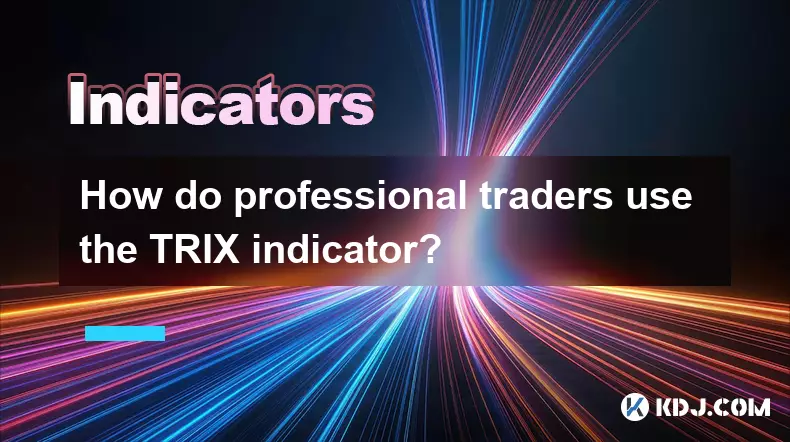
How do professional traders use the TRIX indicator?
Nov 06,2025 at 04:40pm
Understanding the TRIX Indicator in Crypto TradingThe TRIX (Triple Exponential Average) indicator is a momentum oscillator used by professional trader...
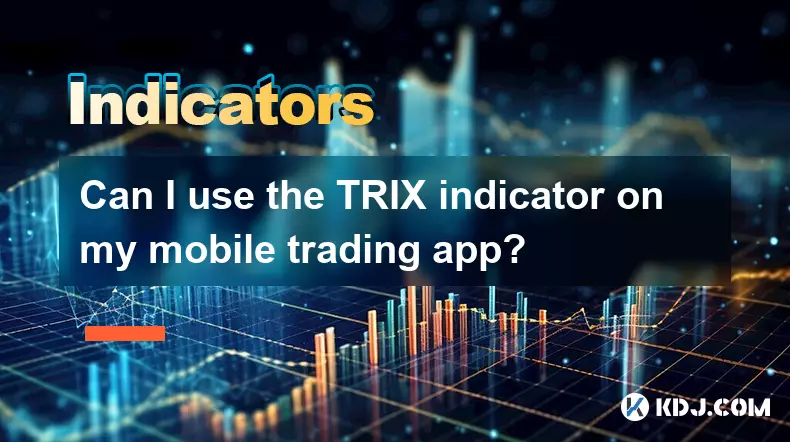
Can I use the TRIX indicator on my mobile trading app?
Nov 07,2025 at 07:40pm
The TRIX indicator, a momentum oscillator designed to filter out short-term fluctuations and highlight long-term trends, has become increasingly popul...
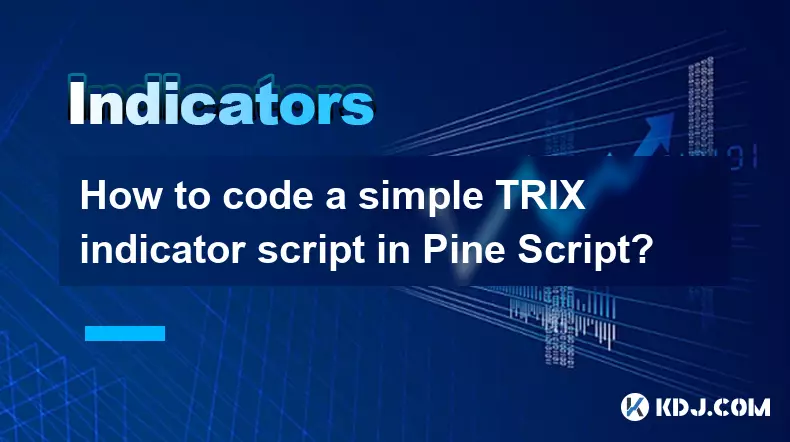
How to code a simple TRIX indicator script in Pine Script?
Nov 07,2025 at 06:20am
How to Code a Simple TRIX Indicator in Pine Script The TRIX (Triple Exponential Moving Average) indicator is widely used in cryptocurrency trading to ...
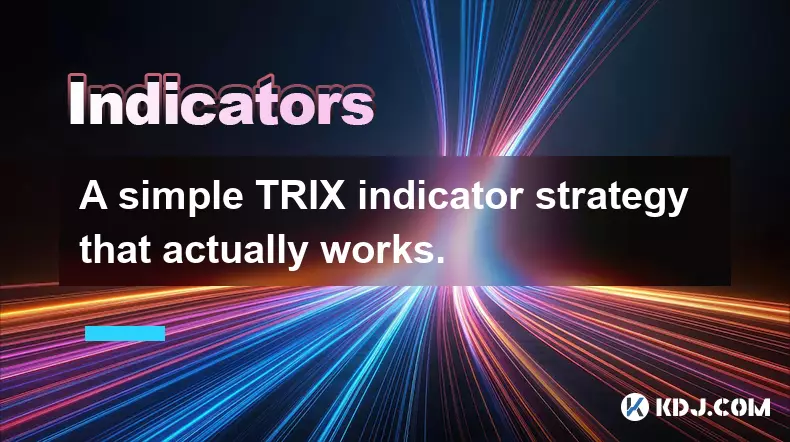
A simple TRIX indicator strategy that actually works.
Nov 08,2025 at 05:39pm
Understanding the TRIX Indicator in Crypto Trading1. The TRIX (Triple Exponential Average) indicator is a momentum oscillator designed to filter out s...
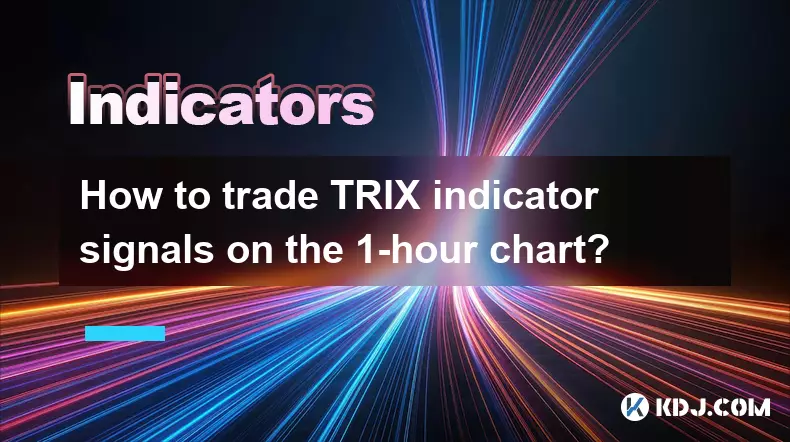
How to trade TRIX indicator signals on the 1-hour chart?
Nov 07,2025 at 05:39am
Bitcoin's Role in Decentralized Finance1. Bitcoin remains the cornerstone of decentralized finance, serving as a benchmark for value and security acro...
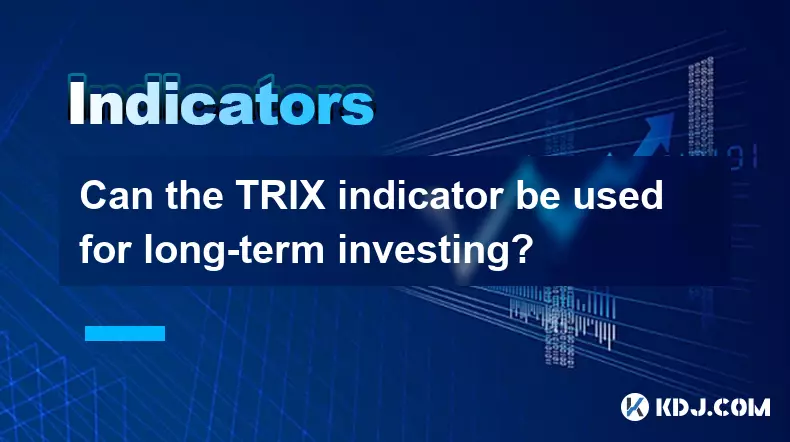
Can the TRIX indicator be used for long-term investing?
Nov 06,2025 at 02:19pm
Understanding the TRIX Indicator in Cryptocurrency Markets1. The TRIX (Triple Exponential Average) indicator is a momentum oscillator designed to filt...

How do professional traders use the TRIX indicator?
Nov 06,2025 at 04:40pm
Understanding the TRIX Indicator in Crypto TradingThe TRIX (Triple Exponential Average) indicator is a momentum oscillator used by professional trader...

Can I use the TRIX indicator on my mobile trading app?
Nov 07,2025 at 07:40pm
The TRIX indicator, a momentum oscillator designed to filter out short-term fluctuations and highlight long-term trends, has become increasingly popul...

How to code a simple TRIX indicator script in Pine Script?
Nov 07,2025 at 06:20am
How to Code a Simple TRIX Indicator in Pine Script The TRIX (Triple Exponential Moving Average) indicator is widely used in cryptocurrency trading to ...

A simple TRIX indicator strategy that actually works.
Nov 08,2025 at 05:39pm
Understanding the TRIX Indicator in Crypto Trading1. The TRIX (Triple Exponential Average) indicator is a momentum oscillator designed to filter out s...

How to trade TRIX indicator signals on the 1-hour chart?
Nov 07,2025 at 05:39am
Bitcoin's Role in Decentralized Finance1. Bitcoin remains the cornerstone of decentralized finance, serving as a benchmark for value and security acro...

Can the TRIX indicator be used for long-term investing?
Nov 06,2025 at 02:19pm
Understanding the TRIX Indicator in Cryptocurrency Markets1. The TRIX (Triple Exponential Average) indicator is a momentum oscillator designed to filt...
See all articles





















![The Graph Price Prediction [GRT Crypto Price News Today] The Graph Price Prediction [GRT Crypto Price News Today]](/uploads/2025/11/07/cryptocurrencies-news/videos/690d4df44fe69_image_500_375.webp)



















































